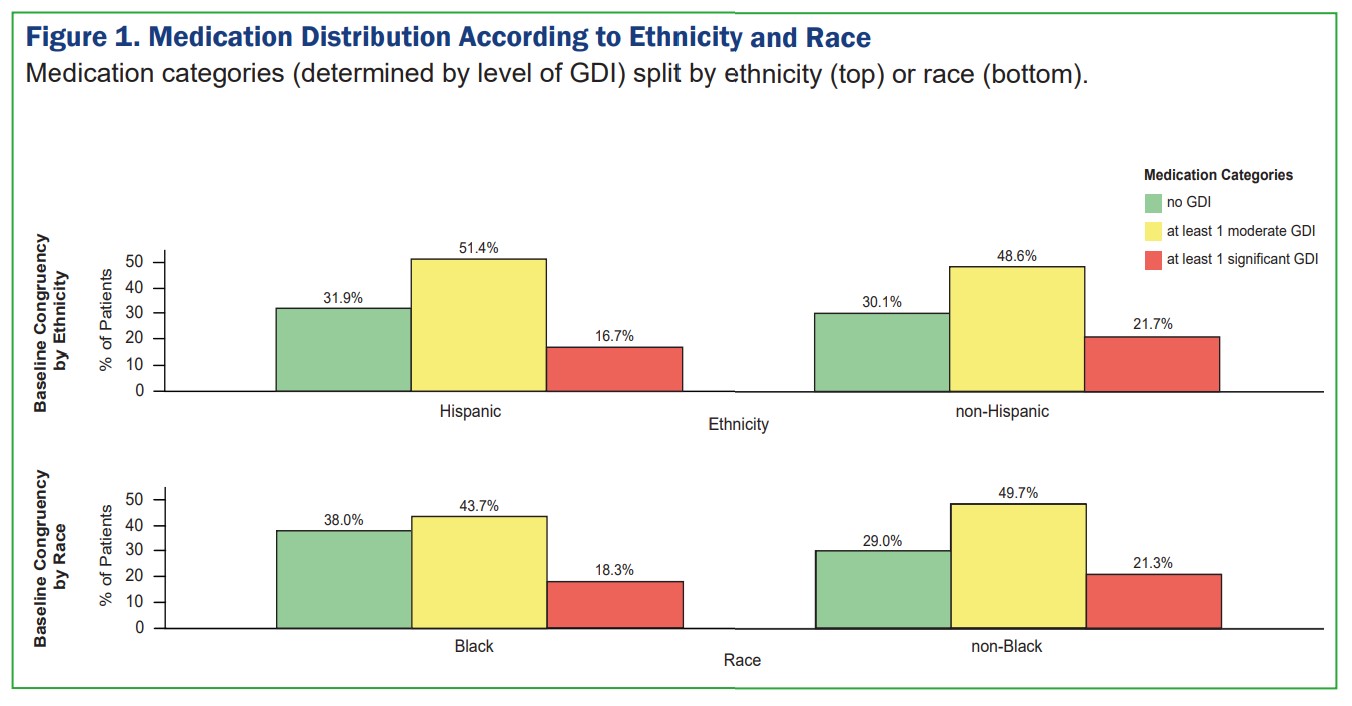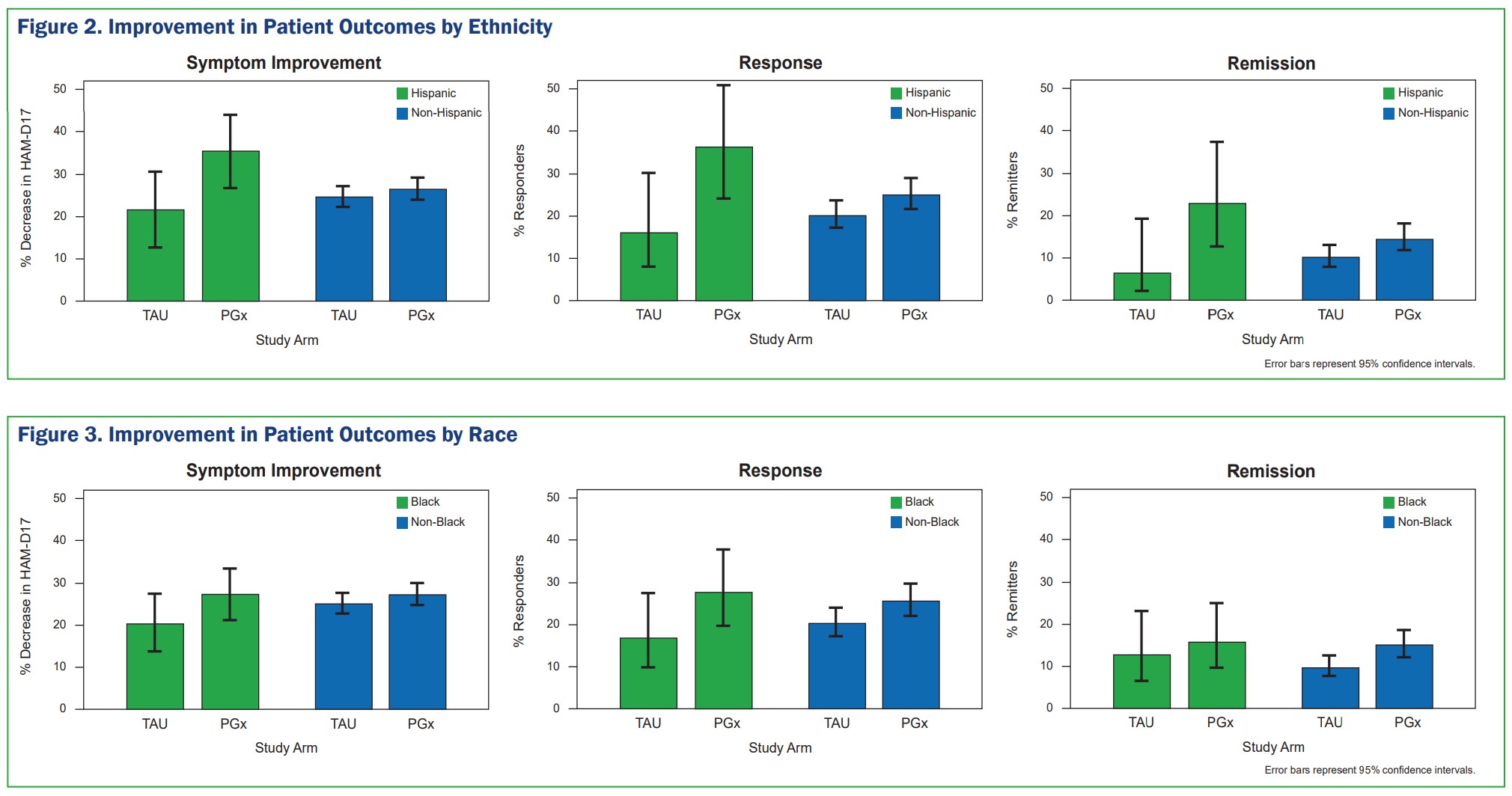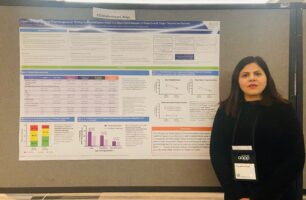This blog summarizes key points discussed during Myriad Mental Health’s July 2022 Webinar: Building Trust by Reducing Bias: The GeneSight Test as a Tool for Mental Health Equity
The panel featured:
 Gus Alva, MD, DFAPA – founder and medical director, ATP Clinical Research in Costa Mesa, Calif. Gus Alva, MD, DFAPA – founder and medical director, ATP Clinical Research in Costa Mesa, Calif. |
|
 Johnny Williamson, MD – owner, Spectrum Behavioral Health in Hinsdale and New Lenox, Ill. Johnny Williamson, MD – owner, Spectrum Behavioral Health in Hinsdale and New Lenox, Ill. |
|
 Morgan Saulsberry, PharmD – senior medical science liaison, Myriad Mental Health, Dallas, Texas Morgan Saulsberry, PharmD – senior medical science liaison, Myriad Mental Health, Dallas, Texas |
The CDC states that racial and ethnic minority groups, throughout the United States, experience higher rates of illness and death across a wide range of health conditions, including diabetes, hypertension, obesity, asthma, and heart disease, when compared to their white counterparts.
Further, research published in JAMA Psychiatry found that mental health-related emergency department visits varied amongst racial and ethnic minority groups during COVID-19 pandemic. This may suggest a need for focusing on proactive and preventative mental healthcare in certain racial and ethnic minority groups during the pandemic. According to this research article, “race and ethnicity are related to inequities in hospital care and mortality, and that stigmatizing experiences and other factors can lead to mistrust.”
The importance of trust when caring for a patient

“The psychology of how somebody perceives things, social issues and spiritual issues all encompass this very theme,” said Dr. Alva.
According to Dr. Williamson, barriers to equitable mental healthcare are high. For example, some barriers may include:
- Inaccessibility to information and education about effective forms of treatment
- Stigma about mental health
- Concerns about encountering bias in healthcare settings
For Dr. Williamson, being able to communicate in a way that patients feel heard and understood is a highly important skill to build trust and combat skepticism, especially in mental healthcare.
“It requires some level of experience and technical knowledge around the illness state, that individual, and other norms and values of the race and ethnicity of the individual that’s seeking care,” said Dr. Williamson.
Inability to communicate effectively may negatively impact a patient’s bond with a clinician. It is especially true if the patient is seeking care for the first time and is already skeptical about what they may be offered.
Defining “Mental Health Equity”
Addressing the underlying issues that contribute to skepticism may help healthcare providers achieve mental health equity.
Education, economic status, and lifestyle factors are just a few of the factors that may help certain individuals access preventative mental health care. Yet, racial and ethnic discrimination causes some individuals to not have the same opportunities or information to make informed healthcare decisions.
Healthcare providers have a unique opportunity to bridge the information divide in the time they spend with patients.
“It’s very important to have our healthcare providers be active participants and engage in activities that help bring awareness to this concern,” said Dr. Williamson. He said factors like housing and reliable transportation can be barriers to treatment.
Mental health equity can also be improved when treatments are being developed.
“When it comes to research, it’s very important that when we’re showing treatments are effective, that we’re showing treatments are effective for all people, not just for a certain race or ethnicity,” said Dr. Saulsberry. “It’s important when we’re doing trials, to make sure we have a diverse population, in order to make sure that those endpoints and outcomes that we’re looking for actually translate across all those different populations.”
Dr. Saulsberry explained that while progress has been made to increase diversity in sample groups, it is still common for clinical studies to include a cohort of mostly Caucasian individuals.
One reason for that may be a language divide among the researchers performing clinical trials and those who could potentially enroll in the trial.
“If you don’t have the appropriate amount of professionals that can reflect back on the individuals who may be participants of a given clinical trial, then obviously you’re going to be limited just by that,” noted Dr. Alva.
Using the GeneSight® test with diverse populations
Dr. Saulsberry outlined a post-hoc analysis of the GUIDED Study, a study that assessed the impact of the GeneSight Psychotropic test on psychiatric treatment response compared to treatment as usual (TAU). The original study found directional, but not statistically significant, improvement of symptoms on its primary endpoint, and statistically significant and clinically meaningful increases in response and remission rates for patients in the GeneSight arm versus the TAU arm at week 8.
A new analysis of GUIDED data reviewed the impact of the GeneSight test on outcomes for Black and Hispanic patients. The results, first presented at the American Psychiatric Association’s 2022 Annual Meeting, demonstrated that patients whose clinician’s treatment decisions were informed by GeneSight Psychotropic testing showed improvements in clinical outcomes regardless of self-reported race or ethnicity.
This analysis revealed that a similar percentage of Black and Hispanic patients entered the study on a medication with significant gene-drug interactions, compared to the overall population of the GUIDED study (Figure 1).


Reacting to the study, Dr. Williamson noted that there are few objective measurables when prescribing medications for patients in psychiatry and mental health. The GeneSight test can be used, he says, “to understand how gene-drug interactions can occur within a patient and also how their body may likely metabolize the medicines.”

“This is actually a really cool test,” added Dr. Alva. “The GeneSight test does allow us additional objectivity so as to be able to figure out how we might be able to help out our patient in a better manner… the importance here is that it’s not necessarily going to tell us what exactly we have to do, but it’s going to help us so that we’re not necessarily tripping over ourselves with things that are very obvious.”
It was also noted that biases have been found to exist when prescribing psychiatric medications. In particular, one study found a tendency to overmedicate African American patients with psychiatric drugs compared to other patients. Another way Dr. Williamson said the GeneSight test can reduce bias is by informing dosing decisions for minority patients. He noted that subconscious racial biases may cause some individuals to be fearful of African Americans, especially males. In a healthcare setting, subconscious biases may result in an African American patient’s symptoms being perceived as more dangerous compared to other patients exhibiting similar symptoms, which could result in prescribing of higher doses and poor care.
“A test like [the GeneSight test], depending on how it’s used, certainly has the possibility to try to cut into that,” said Dr. Williamson. “With the objective data you can acquire through the GeneSight testing, I can imagine someone using that data to make a clinical choice in place of them using their own subjective perspectives.”
“The reason we went into this particular field is that we have this altruistic sense of wanting to help out our fellow individual, regardless of what they look like,” added Dr. Alva. “We’ve been talking about the whole sense of equity of care, and that is literally laying before everybody the exact same opportunity of being able to thrive and lead as healthy of a life as possible.”
View the full webinar for more conversation about mental health equity and how the GeneSight test provides healthcare providers with objective information to help inform treatment decisions.
For more information about barriers to mental health care, the history behind Black skepticism of mental health care and many other educational topics for healthcare providers, visit our blog. If you’re interested in registering to order the GeneSight test, you can take the next step here.
Our articles are for informational purposes only and are reviewed by our Medical Information team, which includes PharmDs, MDs, and PhDs. Do not make any changes to your current medications or dosing without consulting your healthcare provider.
The GeneSight test must be ordered by and used only in consultation with a healthcare provider who can prescribe medications. As with all genetic tests, the GeneSight test results have limitations and do not constitute medical advice. The test results are designed to be just one part of a larger, complete patient assessment, which would include proper diagnosis and consideration of your medical history, other medications you may be taking, your family history, and other factors.
If you are a healthcare provider and interested in learning more about the GeneSight test, please contact us at 855.891.9415. If you are a patient, please talk with your doctor to see if the GeneSight test may be helpful.





